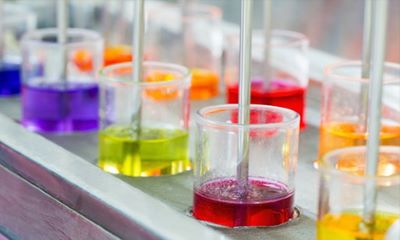Industry leaders laid thrust on digital portals for accelerating innovation and aggregation of products besides regulatory streamlining

As per various reports, the production value of the pigments industry in India reached a volume of nearly 133.52 million tons. The India dyes and pigments market accounts for almost a quarter of the global market and is expected to grow at a CAGR of 11% between 2021 and 2026.
In this context, the recent ‘Conclave on Dyestuff Industries’ discussed the constraints and opportunities on the sidelines of ‘India Chem 2022’, the 12th Biennial International Exhibition and Conference held on November 03, 2022 in New Delhi.
“Dyestuff and pigments is the only industry within the chemical sector in India that holds 17% of the global market as compared to other industries in terms of market share. It is also export positive which means the foreign exchange we earn is higher than what we want to spend on the raw materials or finished goods. Currently, India has a market size of US$ 6.7 billion whereas China has US$ 11 billion. PMO has taken cognizance of this and under vision 2047, it plans to move ahead of China. To fulfill that objective, we need to develop a vision document on five areas including raw material and feedstock; human resources and labor; market development; technical upgradation and innovation, and environment,” said Janak Mehta, President, Dyestuffs Manufacturer Association and President, Dyetex Corporation.
We are exporting a lot but then there is an issue that when the industry is not doing well globally, it also hits us maximum. In textiles, the market in the US is shifting to Central America and we should see how we can compete with countries such as Honduras and all other countries that are becoming huge supply bases. In home textiles, we are doing best as we export a lot to the US. Since we have no FTAs in Europe, we are yet not there. In denim areas, we are more localized whereas Pakistan, Bangladesh and Turkey are doing well in terms of exports. We need to develop business clusters for smooth transportation. We also need innovation portals where we can exchange knowledge with academia. It will help in accelerating innovation,” said Anjani Prasad, MD, Archroma India.
“The biggest consumer industry is the textiles industry and understanding its requirements will give us tremendous benefits to develop the products. Disperse dyes are now being used in sportswear and we feel India’s presence in the segment is very much required. In denim we are self-reliant in sulphur black. We are also exporting to the global market but we don’t have a strong presence in Indigo. Because this is based on the hydrogen cyanide process, we are trying to develop an alternate process so that we can avoid the toxic chemicals that are used to produce it. China is solely producing 90,000 tonnes which is a huge opportunity,” said Dr. G.V.G. Rao, Atul Limited.
“In terms of zero discharge, the pollutants in water evaporate leading to air pollution, which adds to another challenge. In each case, consideration should be given separately as per the requirement. CTA amendments must be fast as by the time our request to change the product mix gets approved, we already lose our order. The ECA requirement should be renewed or relaxed whenever a new less pollution oriented technology is used. We don’t receive it on time,” said Yogesh Parikh, Avani Dyechem Industries.
“Naphthalene derivatives are very essential for reactive dyes. India has been pioneering these but we lost the opportunity in the 1990s due to bad pricing. Time is right to have the focus on naphthalene based feedstock. It has enough potential to boost exports. We import 30,000 metric tonnes of β-naphthol from China which is very huge,” said Vatsal Naik, Mahavir Synthesis.
“We are an intermediary supplier of dyes to different industries. So, we have a different advantage and a perspective. So I think from what I heard about the naphthalene or β-naphthol, we would be interested in looking at the viability of new projects. Dyestuff industry is an old industry in India but we need an aggregator in the chemical industry to reduce the cost and become competitive globally. Maybe the government could help us in becoming a competitive industry. For specifics, we are leading in benzene and toluene but we can try naphthalene as well,” said Pankaj Mehta, Aarti Industries Ltd.
Subscribe to our newsletter & stay updated.